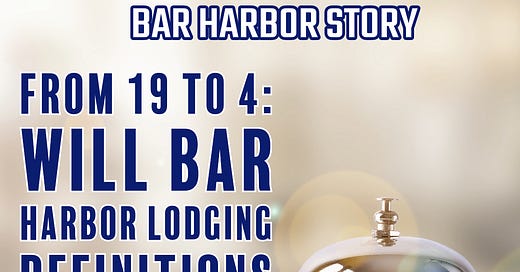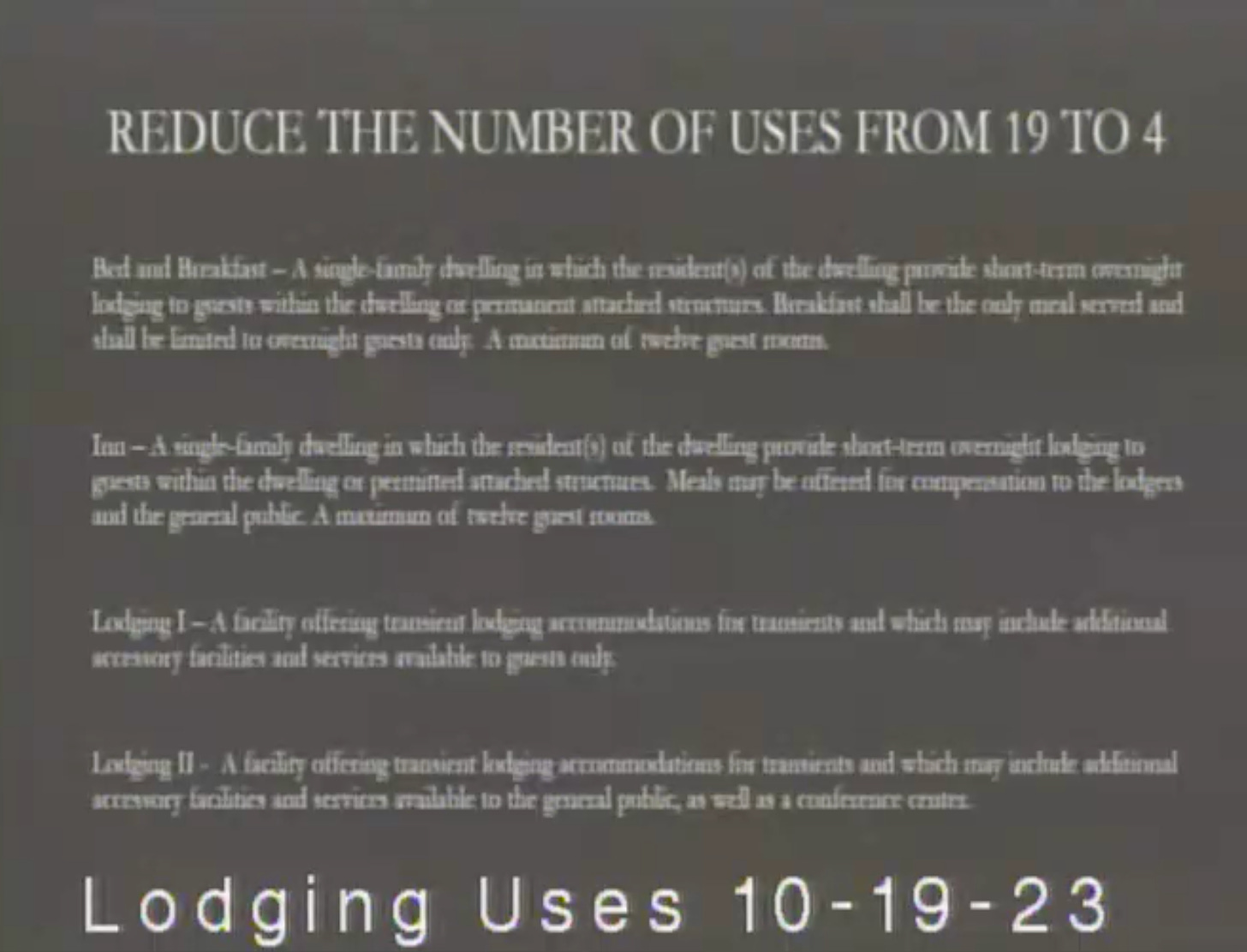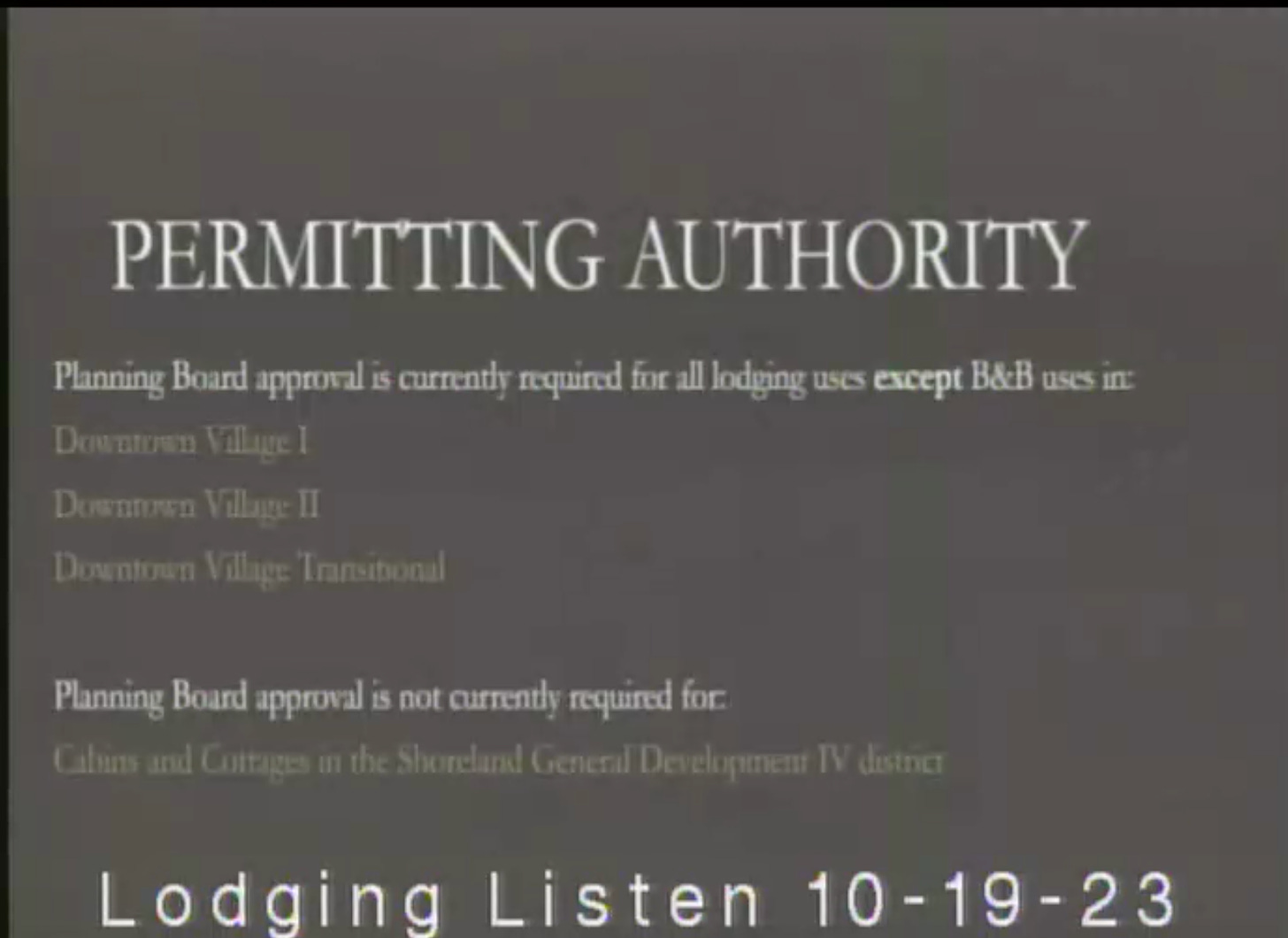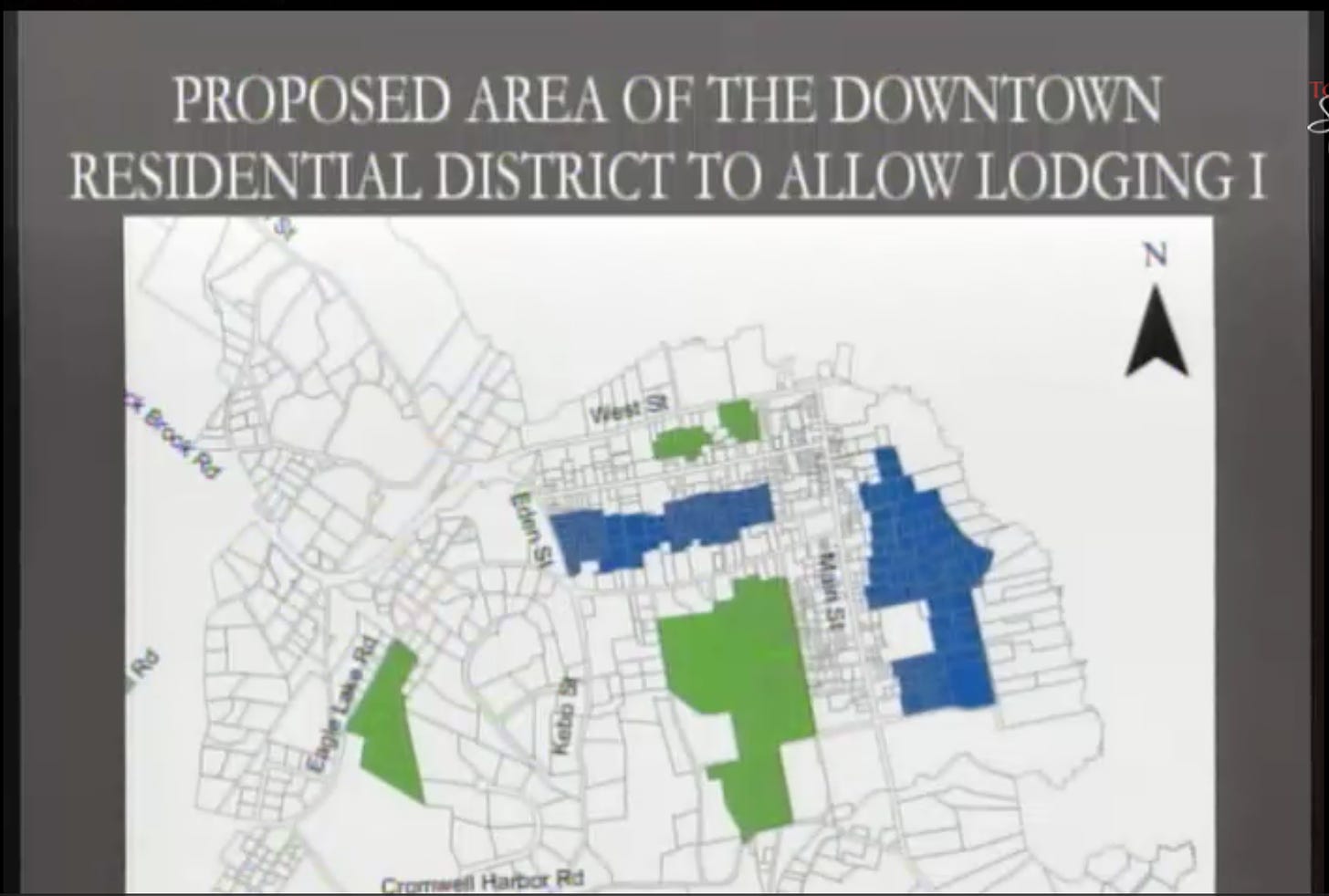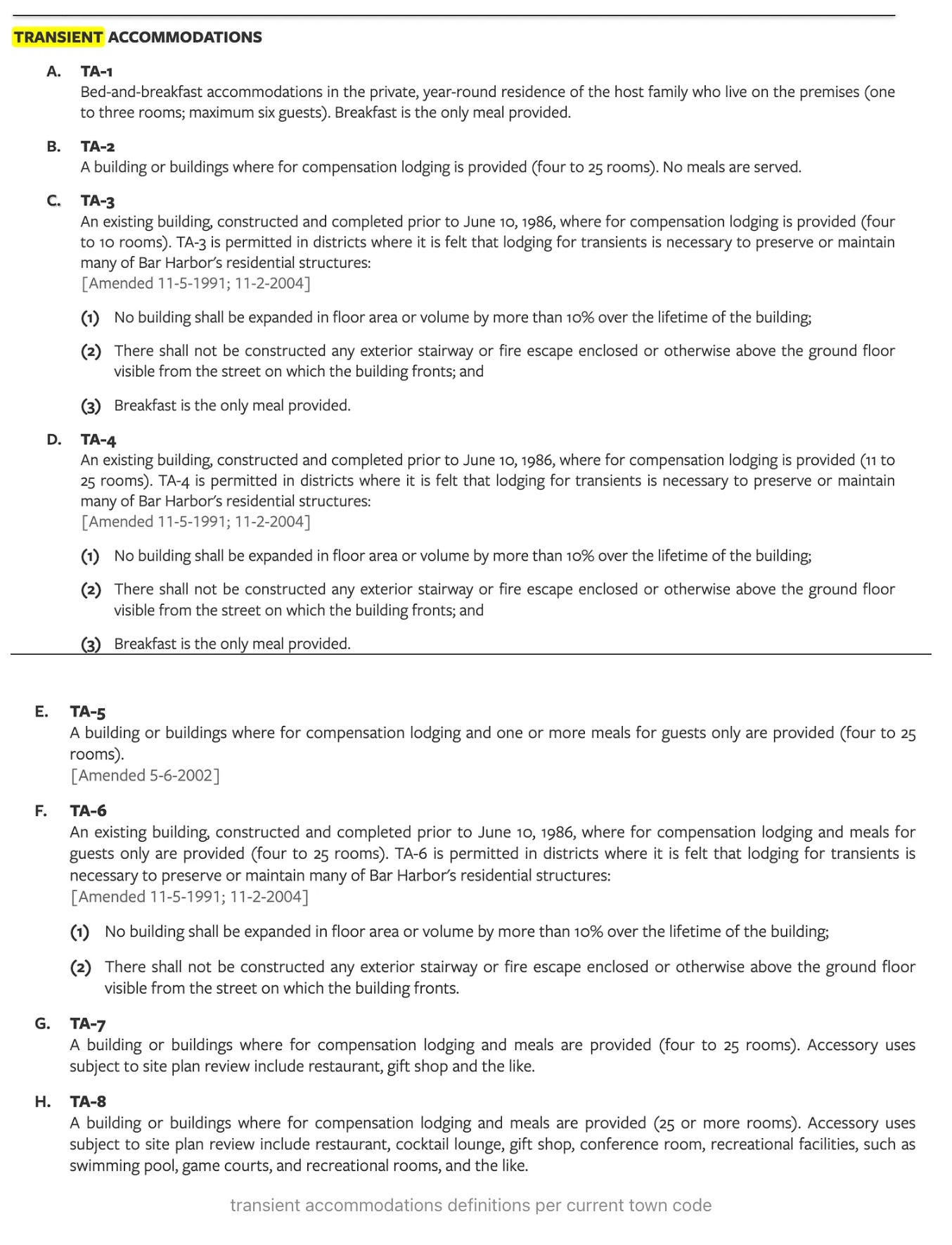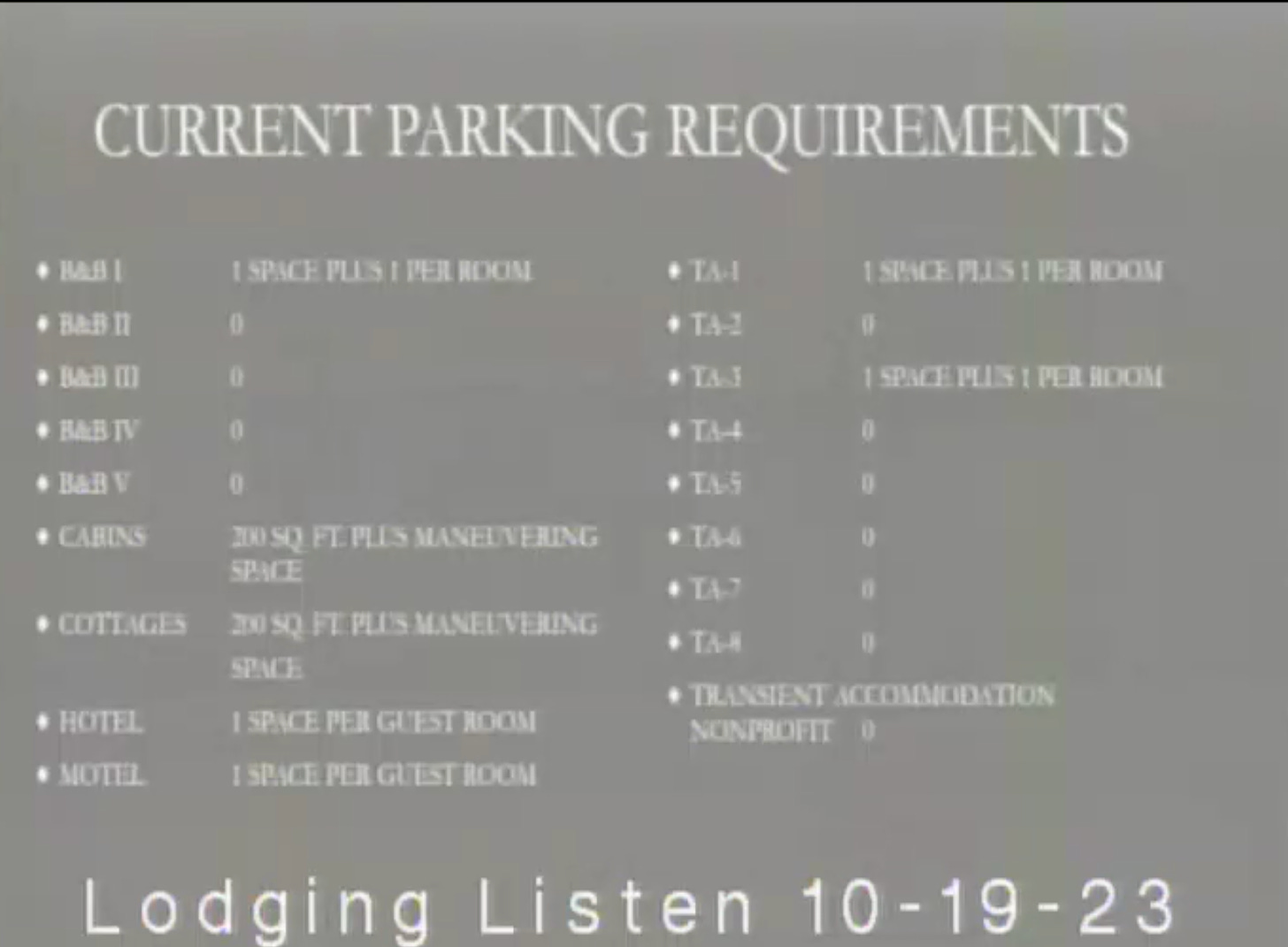From 19 to 4: Will Bar Harbor Lodging Definitions Get Cleaned Up?
Code Enforcement Officer Holds Listening Session About Potential Changes
BAR HARBOR—The Bar Harbor Land Use Ordinance—the rules that determine how land in town can be used—needs a little Marie Kondo treatment. The town has 40 or so zones with different rules for development in each zone. The number of different lodging types (not including short-term rentals) is 19. Sometimes important things are not defined. Sometimes rules don’t make sense.
That can make applying those rules consistently and fairly difficult sometimes. So, the town’s code enforcement and planning departments have embarked on a mission to clean that ordinance up, do a little decluttering and potentially some reorganizing.
Code Enforcement Officer Angela Chamberlain led a listening session about some potential changes to the town’s land use ordinance and how it defines lodgings. Those changes are still very much in draft form and she presented them, October 19, to try to gather more feedback about the proposal.
There are various problems within the current land use ordinance related to lodging (overnight accommodations where people stay for less than 30 days), she said. And there are far too many uses and definitions.
There are 19 different kinds of transient accommodation definitions in the town’s land use ordinance, including five different types of bed and breakfasts. None of the bed and breakfasts have any room limitations. She’d like to winnow that lodging definition number to four.
Cabins, cottages, bed and breakfasts, motels, hotels, and motels accessory to cabins and cottage are examples of transient accommodations. Some are not defined in the town ordinance, but are mentioned in the town ordinance. That can make enforcing and understanding the ordinance and its intent problematic.
Other problems include:
Planning Board approval is not consistently required for development.
The permitting process is also not consistent. In some districts, a use requires site approval, while in another district that same use just needs code enforcement officer approval.
Similarly, parking standards are inconsistent and some general review standards are as well.
Then there are nine different transient accommodations definitions. Chamberlain also had a map of where the existing lodging locations are allowed and a list of the existing lodgings in each district. To complicate it further, some places like the Eden Village Hotel and Cottages are in multiple districts.
“This work is not intended to allow any new lodging in any new districts. It’s not intended to limit any lodging where it’s currently allowed,” Chamberlain said. She tried to propose language that recognize those existing conditions.
The goals of the potential amendments, she said, are these:
Reduce the number of lodging use definitions from 19 to 4;
Adjust parking standards;
All lodging uses, no matter their size or location, would need Planning Board approval for that use to be developed;
Outdated and ambiguous standards would be taken out of the ordinance.
There are still details to be added, like a definition of guest rooms, Chamberlain said, and it is all still a draft. Even when it’s no longer a draft, the potential changes need to be voted in by the people of Bar Harbor for them to become rules. Her current hope is to present the changes at the November 2024 election.
Stewart Brecher worried that the goals were not clear enough.
In theater and writing there are things called super objectives for characters as they progress across story and develop. These are layers of goals or wants that are often broken down to the character’s wants, needs, and must haves. The wants are the simplest of those goals. Brecher seemed to want the process to have a higher level of goals: a need or a must have. He and some of the other 10 or so people attending seemed focused on that must have being more neighborhoods and less lodging and congestion in downtown residential areas.
Brecher asked the objective in converting a “big chunk” of downtown residential to lodging. He asked if they were trying to turn all downtown into a commercial district.
“The intent is not to turn downtown corridor into a commercial enterprise at all,” Chamberlain said. It’s a tricky district because there’s a lot of different uses, she said.
The proposal would add lodging 1 as an allowed use to downtown residential district—two portions where it would be allowed within that district are where lodging already exists. This map shows where those are.
This map shows where the proposed areas are that would allow Lodging 1, the blue areas, nothing in the green.
Cara Ryan said she wasn’t sure how the second map occurred. She said if they want voter support, the changes can’t look like an expansion of transient accommodations.
“We’re not going to support this if it opens the door,” she said.
Brecher said that the land use ordinance only gains meaning if it has goals. He said he wasn’t sure if better management of what’s there gets the town to goals or if it just organizes it better. He later asked if there was any connection with the upcoming Comprehensive Plan conversation, which is the vision for the town’s future, and this work.
“I can barely drive a car on Main Street with two cars parking and the UPS truck and cars going in two different directions,” he said and asked if the town has exceeded its limits for people than why it would look to transient accommodations, which would likely create more traffic in the season.
The town, he said, is still doing management exercises rather than thinking exercises.
Planning Director Michele Gagnon said the process was mainly prompted by the approval process that many uses had to go through. The intent, she said, is to continue to allow the uses in the district, but to get people out of the ‘process hole.’ The changes are also meant to simplify and allow more faith and fairness in parking requirements. The hope is that the potential changes set the stage for the town to have the next stages of conversations about town development and growth, those bigger, deeper objectives and vision for the town’s future.
“You don’t start cooking a meal for 22 people when your kitchen is a mess,” Gagnon said.
OTHER THOUGHTS
One Atlantic Avenue resident stressed that developing housing should be a priority and was adamantly against expanding the types of lodging uses in the town.
Brecher said that when he was on the Planning Board, he remembers the discussion before the Planning Board allowing people to rent a few rooms because housing was no longer affordable and they risked losing their homes because without room-rental income, they could no longer stay there. Now, he said, they are dealing with unintended consequences of that decision.
Tom St.Germain asked why campgrounds aren’t being looked at as well. Chamberlain said those definitions do need some work, too.
St.Germain said that conditional uses are just in the village residential and the Mount Desert Street corridor and if Chamberlain’s draft eliminated those uses. She said they did. He advocated for a higher number than 12 for bed and breakfasts. In 2010, voters approved no limitation on rooms for those uses, he said. Chamberlain said the proposed change with room limits for bed and breakfasts was because bed and breakfasts didn’t have room limits while transient accommodations did have those limits. When she surveyed the bed and breakfasts, most had 12 rooms or less, she said, which is how she came up with that number.
St.Germain also asked about why cabins were being eliminated as a use in village residential when Chamberlain had said that she was trying not to eliminate uses. Cabins represent a good way to achieve density and could serve as housing.
Cabins can’t be flipped and used as dwelling units because the town’s ordinance requires that property owners pick a use. So, a cabin would require use for less than 30 days at a time, but a dwelling unit would require use for more than 30 days at a time. The ordinance doesn’t allow that.
Gagnon said that maybe the town needs to ask itself why this isn’t allowed.
St.Germain also worried about potential increased parking requirements for existing places that might want to make small changes.
Anna Durand said that in general she appreciated the town going for the a more streamlined approach to transient accommodations. She also asked about parking requirements for properties that might want to expand or change its use that could never have more parking on its existing lots.
Stephen Coston agreed and advocated condensing the land use ordinance and its lodging aspects to something more than a handful of people can navigate.
“I don’t think most people can understand this document,” Coston said. There’s a lot of wrong assumptions people make because of how the land use ordinance is written, he said, and it’s not the people’s fault that it’s so difficult to use. “It’s just a mess.”
He also shared St.Germain’s concern about parking. He thinks that 1.33 spaces per room is an aggressive parking standard, though it works in areas where hotels serve as convention centers or restaurants. But in Bar Harbor, people are usually staying at the hotel where the wedding or event occurs, he said. Most nights, he said, you have less cars in a lodging’s lot than guests staying in hotels or bed and breakfast in the summer.
He also said Bar Harbor is a walking town, especially for employees and younger people, many of whom don’t have or bring cars with them for the summer. This means a need for less parking at lodgings as well.
“In Bar Harbor, what can be permitted as a bed and breakfast is not necessarily a bed and breakfast,” Coston said, moving the conversation back to definitions of lodging.
He spoke about the difficulties of defining properties in Bar Harbor. In the 70s and 80s, the categories of hotel and motel and bed and breakfasts were distinct, but now there are places that are multiple structures, motel-looking structures that serve breakfast. He said almost every lodging in Bar Harbor has an aspect to it that makes the definition fuzzy.
“What in the world is Sand Bar Cottage? What is that?” He said Sand Bar Cottage, which he owns, is five cottages, including two historic cottages, and that it serves breakfast and drinks. “What is that?” He’d call it a boutique hotel, but most would probably call it a bed and breakfast, he said.
The next steps are gathering and organizing the comments from the listening session and POLCO results and then update the Planning Board with that. Then present a proposal for the December 6 Planning Board.
“There’s a lot to have to happen in the next six months to be ready for November,” Chamberlain said.
Unless otherwise noted, images via Chamberlain presentation.
Upcoming Listening Session for Employee Housing Amendment
Purpose: The Planning and Code staff would like to share information and answer questions about potential Land Use Ordinance amendments regarding employee housing. The goal is allow more businesses and institutions to develop housing for seasonal workers, students, and others.
Date & Time: Thursday, October 26, from 4:00 PM to 6:00 PM
Location: Town Council Chambers - 93 Cottage Street, Bar Harbor, ME 04609


